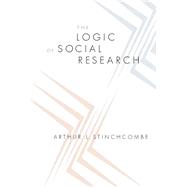
Note: Supplemental materials are not guaranteed with Rental or Used book purchases.
Purchase Benefits
What is included with this book?
| Preface and Acknowledgments | xi | ||||
| 1 Methods for Sociology and Related Disciplines | 1 | (21) | |||
|
1 | (8) | |||
|
9 | (2) | |||
|
11 | (1) | |||
|
11 | (2) | |||
|
13 | (1) | |||
|
14 | (2) | |||
|
16 | (1) | |||
|
17 | (1) | |||
|
18 | (1) | |||
|
19 | (1) | |||
|
20 | (2) | |||
| 2 Distances as Central to Causal Reasoning and Methods | 22 | (14) | |||
|
22 | (2) | |||
|
24 | (5) | |||
|
29 | (3) | |||
|
32 | (4) | |||
| 3 The Basic Structure of Economy in Social Research | 36 | (41) | |||
|
36 | (1) | |||
|
37 | (2) | |||
|
39 | (3) | |||
|
42 | (1) | |||
|
43 | (9) | |||
|
52 | (3) | |||
|
55 | (2) | |||
|
57 | (1) | |||
|
58 | (1) | |||
|
59 | (3) | |||
|
62 | (6) | |||
|
68 | (2) | |||
|
70 | (1) | |||
|
70 | (3) | |||
|
73 | (2) | |||
|
75 | (2) | |||
| 4 Using Data to Refine Concepts of Distances between Units of Analysis | 77 | (40) | |||
|
80 | (1) | |||
|
81 | (2) | |||
|
83 | (2) | |||
|
85 | (1) | |||
|
86 | (2) | |||
|
88 | (1) | |||
|
89 | (2) | |||
|
91 | (2) | |||
|
93 | (8) | |||
|
101 | (3) | |||
|
|||||
|
104 | (1) | |||
|
104 | (6) | |||
|
110 | (2) | |||
|
112 | (5) | |||
| 5 Refining Concepts about Contexts | 117 | (32) | |||
|
120 | (3) | |||
|
123 | (3) | |||
|
126 | (2) | |||
|
128 | (2) | |||
|
130 | (2) | |||
|
132 | (3) | |||
|
135 | (2) | |||
|
137 | (1) | |||
|
138 | (6) | |||
|
144 | (2) | |||
|
146 | (3) | |||
| 6 Units of Analysis and Mechanisms: Turning Causes into Effects | 149 | (90) | |||
|
152 | (6) | |||
|
158 | (2) | |||
|
160 | (2) | |||
|
162 | (4) | |||
|
166 | (4) | |||
|
170 | (6) | |||
|
176 | (6) | |||
|
182 | (2) | |||
|
184 | (1) | |||
|
185 | (1) | |||
|
186 | (2) | |||
|
188 | (2) | |||
|
190 | (2) | |||
|
192 | (2) | |||
|
194 | (4) | |||
|
198 | (1) | |||
|
198 | (2) | |||
|
200 | (10) | |||
|
210 | (1) | |||
|
211 | (3) | |||
|
214 | (1) | |||
|
214 | (3) | |||
|
217 | (3) | |||
|
220 | (4) | |||
|
224 | (3) | |||
|
227 | (3) | |||
|
230 | (4) | |||
|
234 | (4) | |||
|
238 | (1) | |||
| 7 Testing Theories by Testing Hypotheses with Data | 239 | (55) | |||
|
241 | (5) | |||
|
246 | (1) | |||
|
246 | (3) | |||
|
249 | (1) | |||
|
250 | (5) | |||
|
255 | (5) | |||
|
260 | (2) | |||
|
262 | (4) | |||
|
266 | (1) | |||
|
267 | (2) | |||
|
269 | (2) | |||
|
271 | (4) | |||
|
275 | (1) | |||
|
276 | (3) | |||
|
279 | (9) | |||
|
288 | (3) | |||
|
291 | (3) | |||
| 8 Improving Theories with Data | 294 | (41) | |||
|
296 | (2) | |||
|
298 | (3) | |||
|
301 | (2) | |||
|
303 | (6) | |||
|
309 | (5) | |||
|
314 | (6) | |||
|
320 | (1) | |||
|
321 | (4) | |||
|
325 | (2) | |||
|
327 | (5) | |||
|
332 | (2) | |||
|
334 | (1) | |||
| References | 335 | (12) | |||
| Index | 347 |
The New copy of this book will include any supplemental materials advertised. Please check the title of the book to determine if it should include any access cards, study guides, lab manuals, CDs, etc.
The Used, Rental and eBook copies of this book are not guaranteed to include any supplemental materials. Typically, only the book itself is included. This is true even if the title states it includes any access cards, study guides, lab manuals, CDs, etc.